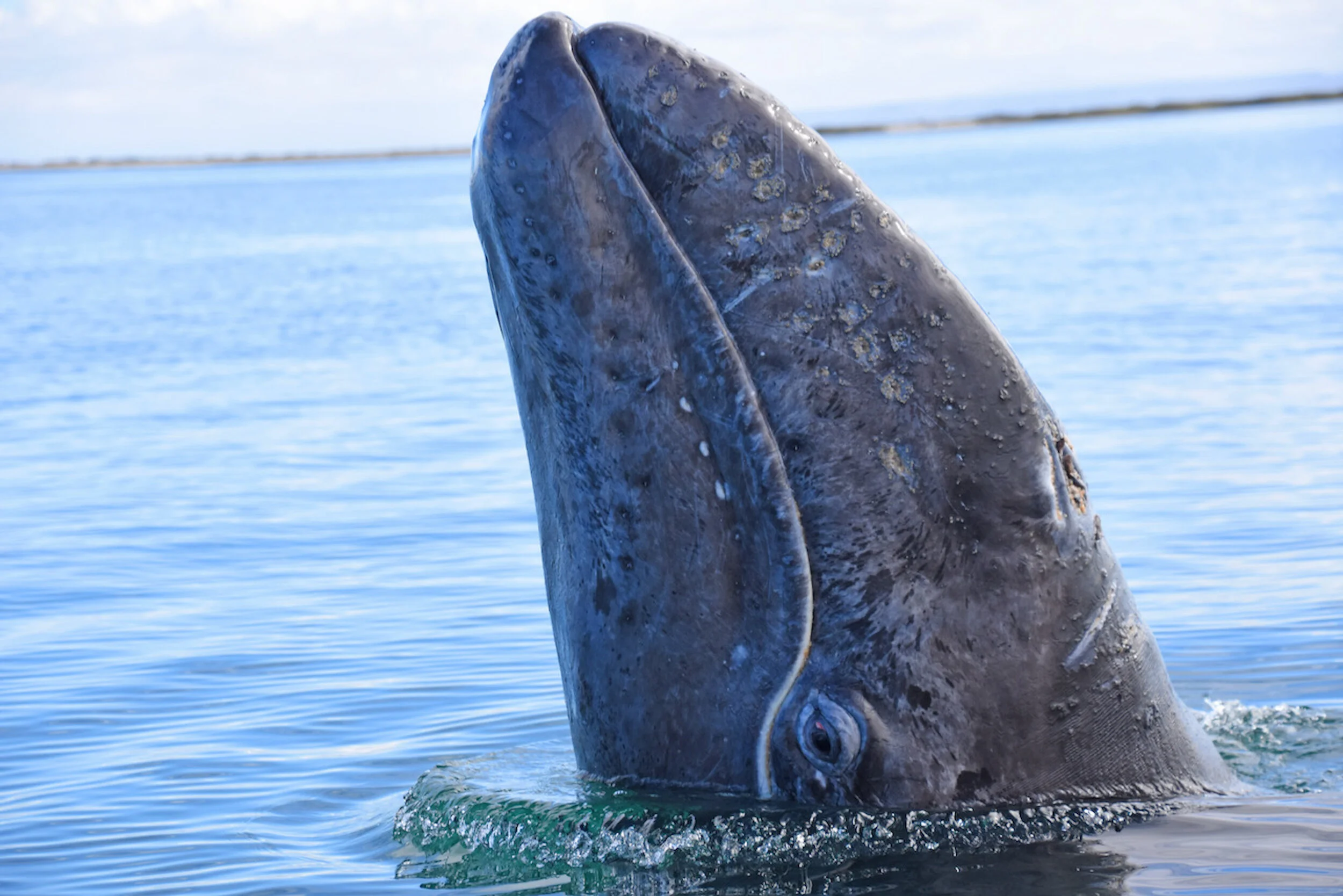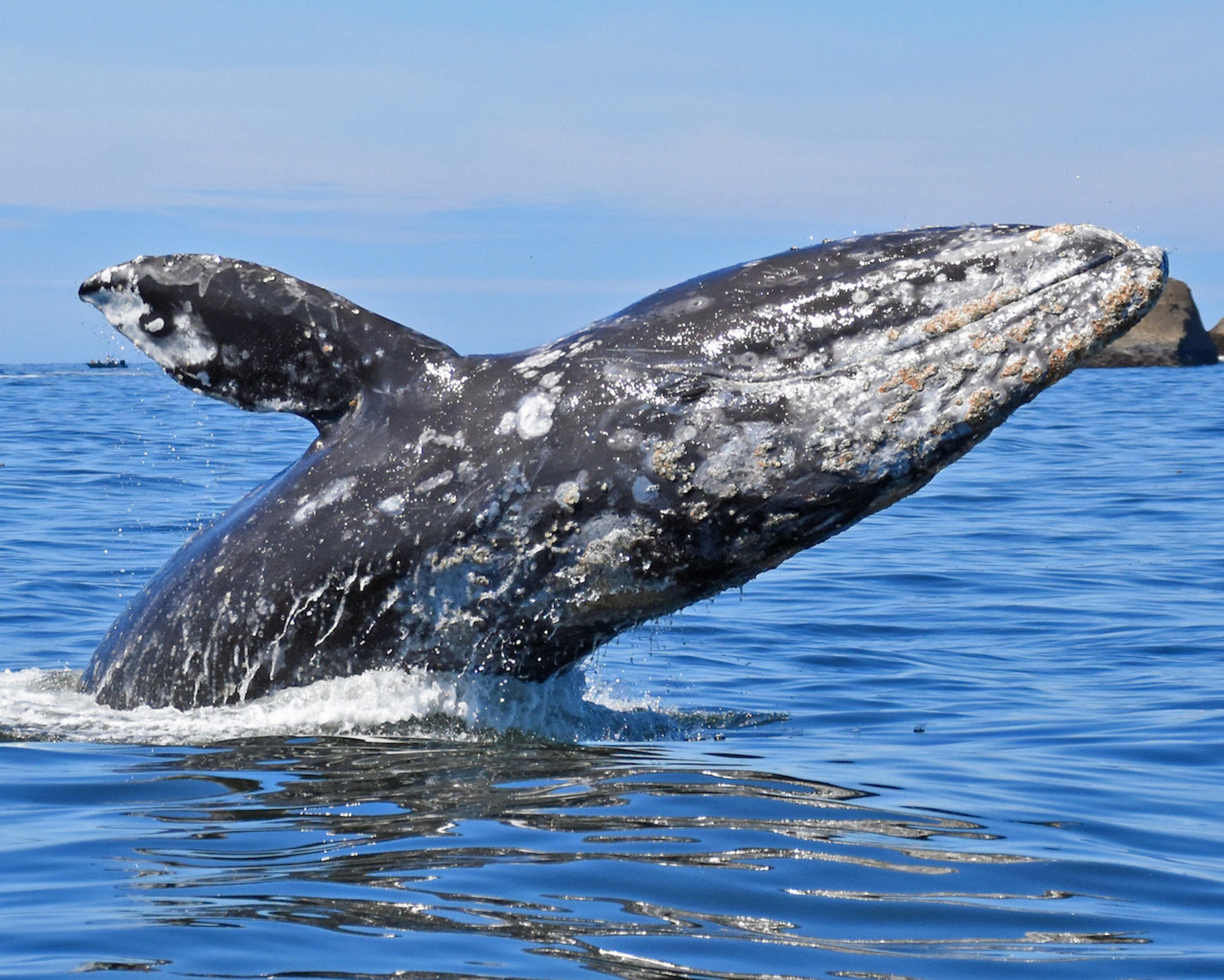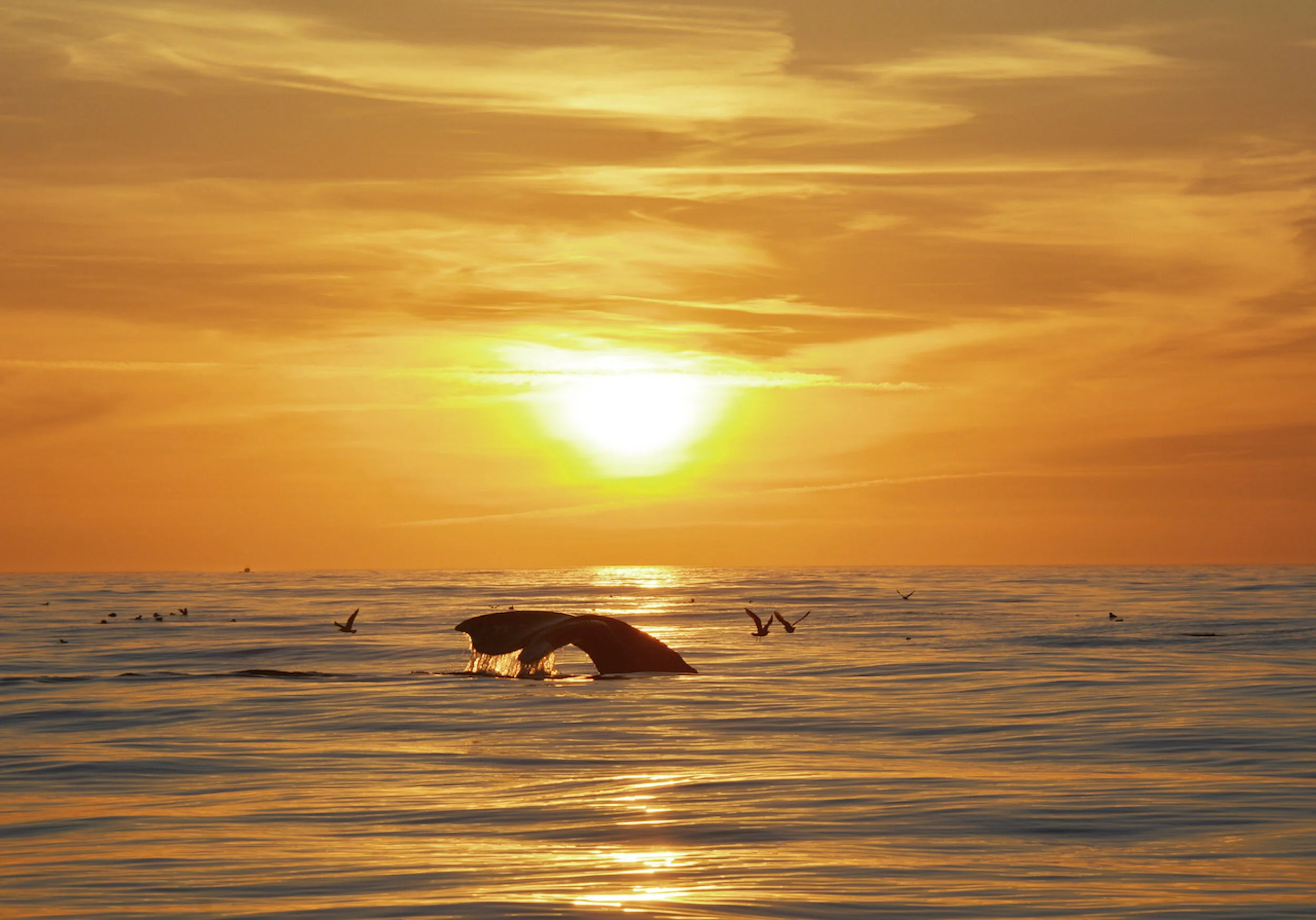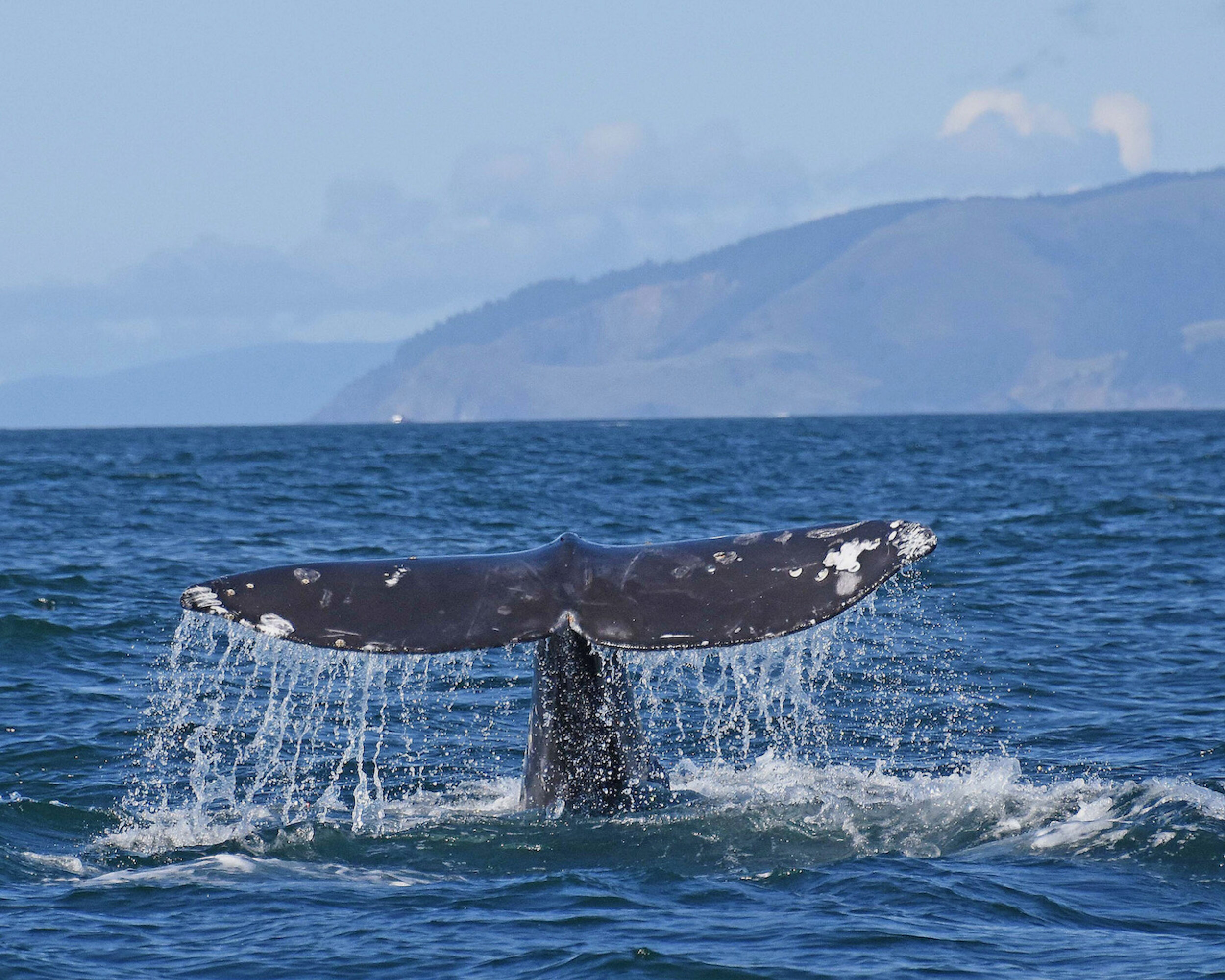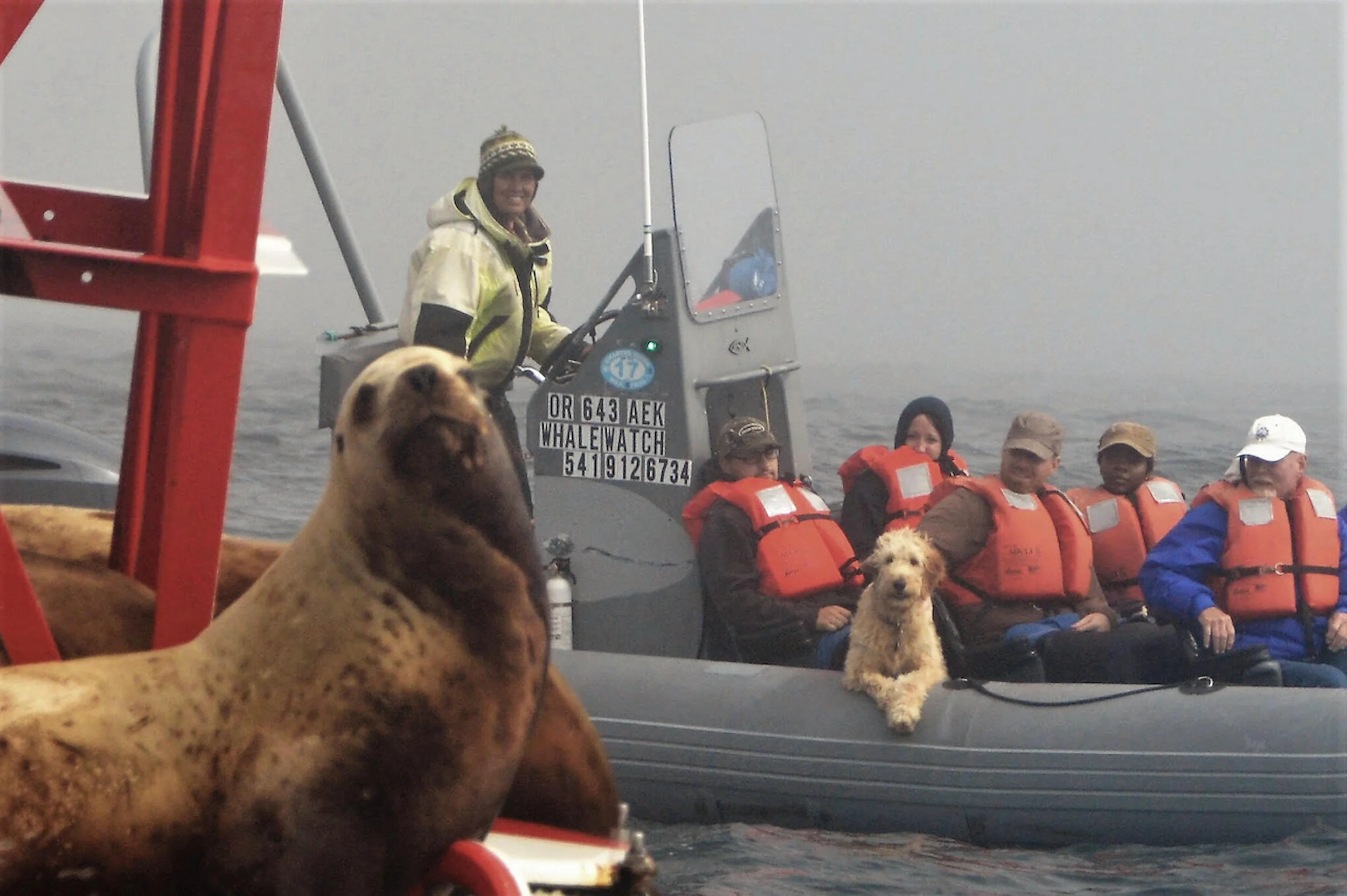Migrate expectations
What to anticipate when whale watching on the Oregon Coast
By Gretchen Ammerman
Oregon Coast TODAY
Traditionally, the times considered best for whale watching on the Central Coast are the week between Christmas and New Year’s Day and the week of Spring Break. But according to marine biologist and owner of Whale Research EcoExcursions, Carrie Newell, not only can Gray whales be seen here all year, spring is good and summer is best.
“We need to change the thinking that there are only two weeks during which you can see whales on the Oregon Coast,” she said. “They are actually closer to shore, typically between one and three miles, during the northern migration in the spring, and in the summer they get so close you can be looking into their blowholes."
Newell, who holds four degrees including a Ph.D. in Biological Oceanography from Oregon State University, uses her fleet of four Zodiac boats to take people up close to whales in the ocean off Depoe Bay all year round, depending on weather conditions.
“I’ve got a boat once owned by Jimmy Buffett, two ex-navy SEAL boats and a retired coast guard boat,” she said. “They comfortably seat between six and 16 people and I provide blankets, hats, gloves and jackets; pretty much everything needed for a comfortable voyage. And, of course I consistently disinfect everything.”
Things like Dramamine or ginger, though, usually won’t be in the kit.
“People don’t get seasick on the Zodiacs because they are lower to the water and they don’t roll as much,” Newell said. “Even I still get seasick in big boats, but not in these.”
One of the things that makes trips with Newell so memorable, in addition to her impressive body of knowledge about cetaceans, is that her skills have been supplemented by her first whale spotting dog Kida, who passed away a few years ago, and now her newest four-footed first mate, Koda.
According to Newell, training a whale dog entails tapping into their natural propensity to see the world through their noses.
“I trained Koda the same way I trained Kida,” she said. “I get downwind from the whale and when we’d get a whiff of whale breath, which is a smell like the worst fart you’ve ever smelled, I clap my hands and say, ‘Whale, whale, whale’ in an upbeat, excited voice.”
Newell had an opportunity to test Koda’s skills very recently.
“I was expecting any whales that might be out to be off to the right, so we were all on that side of the boat,” she said. “Suddenly, Koda ran to the other side and started barking and, sure enough, there were two whales right there. She’s already very attuned to the whales; pretty much the only time she barks is for them.”
Koda had her work cut out for her last summer, though, as Newell said her average 99-percent success rate spotting whales, dropped closer to 85 percent.
“Last year for some reason it appeared the whales were sheltering in place somewhere and practicing social distancing,” she said. “We couldn’t figure out quite what was going on but it likely had to do with the fact that shrimp were not in abundance this year, which could be caused by ocean temperatures or the presence of toxins, which shrimp are very susceptible to; I can’t say for sure. Many of our residents came through and moved on. They don’t stick around if they don’t find food.”
Newell is actually the person who identified that Gray whales eat mysid shrimp, and that huge swarms of mysid shrimp often make up the biomass in the waters off Depoe Bay, making it one of the prime Gray whale-watching sites in the world.
There are four ways Newell uses to determine what the local feeding situation is for the whales.
“If I have time, I dive,” she said. “I can also put in an underwater camera, use a
plankton net or just pay attention to the behavior of the whales.”
Though at the end of last year’s high season, when she was curious about the low number of visiting whales, she narrowed her analysis tools down to three.
“Right when I was ready to go for a dive in October, I saw a harbor seal that had a bunch of fresh bites that were clearly from a shark,” she said. “I’m pretty fearless, but there’s no reason to be careless.”
The West Coast is home to a small population of “resident" whales, which Newell says is currently 232 of the estimated 25,000 living Grays.
But peak migration times see thousands of Grays annually making the trip from Alaska, where they fuel up on rich food sources, to Baja, where they mate and calf.
“We usually see a large group of whales heading south from the third week in December through the end of January but it seems to have started later this year,” Newell said. “The food in Alaska might be poorer, so they had to feed for longer. The formation of sea ice triggers the migration, too; so if that starts later they head out later.”
Because the whales heading south are further out, usually three to five miles off shore, and the ocean conditions are rougher, whale watching by boat increases your chances of getting to see a whale in the “off” season. In March, things start getting a bit better as the whales start heading back to Alaska to bulk up again.
“The northern migration starts with the young males and the pregnant females,” Newell said. “They are the ones that are really hungry, so they move through pretty fast. Starting in May we see the moms and calves coming north. They move more slowly because they are teaching the calves how to feed.”
From roughly the end of May through October is when the summer residents hang around, dining on the all-you-can-eat shrimp buffet — when conditions supply them, that is.
“In the summer you will be on a whale in five to 10 minutes,” Newell said. “The rest of the year, we just need to work a little harder.”
Taking a trip with Whale Research EcoExcursions includes free entry to the Whale, Sealife and Shark Museum in Depoe Bay, and gets you 10 percent off at two nearby eateries: Sea Bites by the Bay, which is open year-round for take-out, and the Whale Bites Cafe, which will open in March and has outdoor dining overlooking the Depoe Bay Harbor.
For more information, go to oregonwhales.com. For the most current conditions for whale trips, go to the Whale Research EcoExcursions page on Facebook, or call 541-912-6734.

